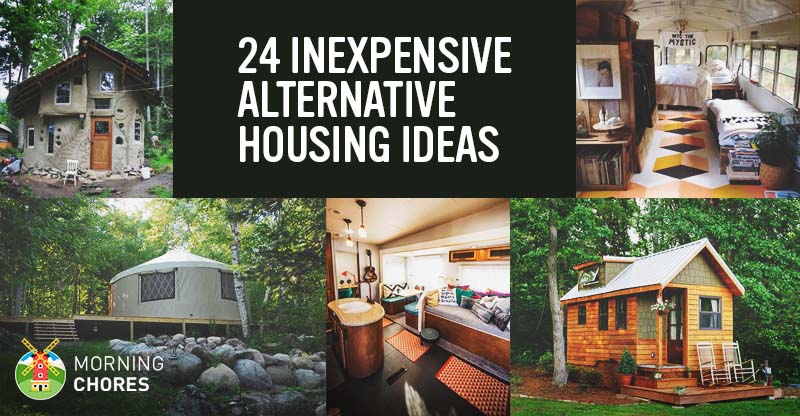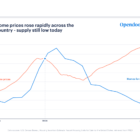Affordable Housing Alternatives

When the economy is thriving, few people would ever think of buying a manufactured or modular home. With greater financial constraints, many people are bound to consider a factory built home as a housing alternative. A careful pondering of the following might lead some to actually pursue that alternative.
Why ‘Mobile Home’ is a Bad Word
Any time your average person hears the words trailer, mobile home, manufactured home, or modular home, they wince, either voluntarily or involuntarily. The same negative stigma even extends to commercial modular built structures. Even some people who purchase factory built homes remove the evidence (the labels or data plates) that they’re living in a factory built home.
Even though modern factory built structures bear little resemblance to the original trailers or mobile homes, which were not built on a permanent foundation and were shoddily built, most people associate “manufactured home” to an image of an old dilapidated trailer. If public opinion can shed such mental associations, they would be more open to housing options that are equivalent, if not better than, traditional site (stick) built housing.
There are many components of site built homes and structures that are factory built (e.g., cabinetry, roof trusses, wall panels, drywall, etc.), so even site built is actually partially-factory built. Some have postulated that, in the future, all homes will be built in factories.
Modular vs Manufactured Home
Many people think that a modular home is the same type of home as a manufactured home. While both types of homes are built and shipped in modules and assembled at the job site, each is built to a different Building Code and regulated by different governmental agencies.
A ‘manufactured home’ is regulated by the Federal Department of Housing and Urban Development (HUD). Manufactured homes are built to federal standard 24 CFR 2480. There are also federal regulations that govern the set-up of manufactured homes and the state government supervision of installation.
Manufactured homes are always built on a permanent steel chassis that is fitted with wheels for transportation to the job site. They are built in factories that must be certified and monitored by the Federal Government (or a represenative thereof).
Modular homes are built to the same codes as their site built counterparts-the State Building Code. They can be built on a permanent steel chassis like manufactured homes (these are called on-frame modular homes) or without any chassis and set upon a site built foundation (these are called off-frame modular homes). If a home is built on a steel chassis, that doesn’t necessarily mean it’s a manufactured home vice modular home.
The Code a Home is Built to Doesn’t Really Matter Anyway
The intent and many of the actual prescriptive requirements found in both the HUD and State Building Codes are largely the same. A definitive statement cannot be made that one is “better” than the other.
The satisfaction a homeowner feels from her home is largely derived from the features that aren’t even required by the Code (normally they are extras the builder or architect added for this purpose). If a home was built using just the minimum standards required in the Codes, it would be like purchasing a Yugo for an automobile.
The Advantages of Factory Built Construction
There are many advantages of factory built, as opposed to, site built construction:
- Cost. If this is a home buyers principal consideration, then the purchase of a modular or manufactured home may result in substantial savings. Manufactured homes are significantly cheaper than site built homes and modulars cost about the same as site built construction.
- Choice of Site and House. Factory built housing allows the homeowner to choose the land the house that sits on the land, and the orientation of the house on that land. While this is also true for new site built custom homes, there are some builders who are unwilling to work in certain remote locations.
- Quality of Construction. The quality of workmanship for factory built housing is superior to site-built construction. The tools that are used in the factory are of higher precision; the factory is a climate controlled environment; and more inspections take place than in a site built environment.
- Construction Time. The average modular or manufactured home can be constructed, shipped, and set up on a permanent foundation in about 3 weeks. The average site built house takes about 3 months to go through the analogous process.
- Environmental Impact. There are some site built contractors who have consideration for the environment, but the vast majority does not. The factory does not impact the surrounding environment in the construction process because the construction takes place inside.



